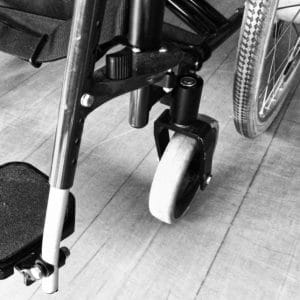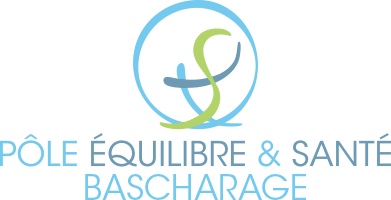Neurological rehabilitation Bascharage

Neurological physiotherapy will try to limit the impact of a brain injury, helping the patient to retain maximum autonomy, maintain independence and preserve quality of life for as long as possible. Rehabilitation should continue as long as the patient shows measurable benefits from treatment and has achieved the agreed goals.
Neurological physiotherapy for adults
Adult neurological physiotherapy involves the re-education and rehabilitation of patients with acute or chronic neurological conditions such as :
- Cerebrovascular accidents (or strokes) occur when cerebral blood flow is suddenly interrupted, depriving one or more parts of the brain of oxygen, leading to dysfunction and death within minutes.
- Traumatic brain injury (TBI): cerebral or bulbar damage characterized by destruction or dysfunction of brain tissue caused by sudden contact between brain tissue and the skull. The main causes are accidents on the public highway, falls during sports or among the elderly, assaults, etc.
- Spinal cord injury: “Paraplegia” is defined as a deficit in motor and/or sensory function of the thoracic, lumbar or sacral segments of the spinal cord, including the trunk, lower limbs and pelvic organs. Tetraplegia is defined as a deficit in motor and/or sensory function of the cervical spinal cord segments, including all or part of the upper limbs, trunk, both lower limbs and pelvic organs.
- Multiple Sclerosis (or MS) is an autoimmune inflammatory disease of the white matter, disseminated throughout the central nervous system, leading to the formation of sclerotic plaques and evolving through successive, more or less regressive attacks, occurring at irregular intervals and of unpredictable duration. It is the most common neurological pathology in young adults.
- Amyotrophic Lateral Sclerosis (ALS, or Charcot’s disease) is a disorder of the nervous system characterized by a weakening of the muscles, impacting physical capacities, the cause of which is still unknown.
- Parkinson’s disease is a degenerative disorder of the central nervous system, initially affecting the dopaminergic neurons of the locus niger. Its cause is still unknown, but it is thought to be multifactorial in origin, with implications for environmental factors.
Damage to your nervous system can result in loss of strength, sensitivity, coordination, balance, hypertonicity, hypo-tonicity and tremors, all of which we can treat and relieve. The predominant rehabilitation objectives are to prevent vicious attitudes and develop the patient’s motor skills. The methods used are essentially passive and active mobilizations, postures, stretching and proprioceptive techniques. These methods must be adapted to the neurological lesions, deficits and aptitude of the patient, while taking into account his/her fatigability, with the aim of maintaining or recovering optimal functionality in his/her personal, professional and social life, and best meeting the patient’s objectives.
Although damaged brain cells no longer function, the remaining cells can form new links with each other. Other brain cells and neural circuits can also replace and compensate for them. Neurological physiotherapy aims to guide this process, known as neuroplasticity.
Neuropediatric physical therapy
The aim of neuropediatric physiotherapy is to enable brain-injured or motor-disabled children to develop their functional motor skills to the full, making the most of their cerebro-motor potential. The therapist will therefore try to help these children progress in their functional skills “through specific training in which automatic motor activities will be relayed by voluntary control to modify the regulation of abnormal postures and the execution of gestures”. In concrete terms, the aim is to make the most of innate automatic motor potential and modify pathological motor organization by establishing new voluntary motor strategies that will :
- Gain greater functionality for greater autonomy
- Prevent abnormal preferential motor patterns from becoming compulsory
- Give the possibility of performing a movement in several different and adapted ways (e.g. sitting up).
- Prevent damage to orthopaedic structures (muscles, joints and bones)
- Valuable gains for a better quality of life
Different methods are used depending on the indications. Depending on the case, physiotherapists work with children with very different difficulties. There are different types of care:
- Cerebral P alsy: The term “Cerebral Palsy” is used when a brain lesion has occurred during the perinatal period (pregnancy, childbirth, first months of life), which can lead to long-term abnormalities in the organization of posture and movement.
- Children with neuromotor developmental delays: In some babies and toddlers, neuromotor developmental disharmony can be very slight and temporary.
- Children with non-neurological orthopedic disorders
- Children with psychomotor disorders: a combination of motor deficits and varying degrees of mental retardation.

